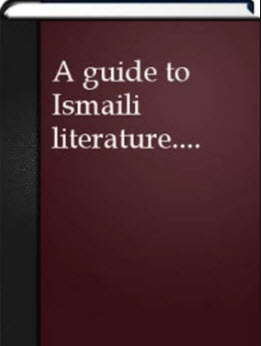Mawlana Sultan Muhammad Shah Aga Khan III (r. 1885-1957) established a research institution, the Ismaili Society (Anjoman-e Esma‘ili), on February 16, 1946 in Bombay (now Mumbai), India. According to the Charter, its primary objective was “the promotion of independent and critical study of all matters connected with Ismailism with the stated policy of refraining from all religio-political missionary activities” (Daftary, Anjoman-e Esma‘ili, IIS).
The Ismaili Society evolved from the Islamic Research Association, which was also established by Mawlana Sultan Muhammad Shah in Bombay in 1933. The Russian scholar Wladimir Ivanow was involved in the creation of both institutions.
‘Ivanow (1886-1970), the pioneer of modern Nizari Ismaili Studies, was born in St. Petersburg, Russia, where he studied Arabic and Persian history as well as Islamic and Central Asian history at the Faculty of Oriental Languages, University of St. Petersburg, graduating in 1911. Subsequently, he conducted field research on Persian dialects and folk poetry in Persia for several years. In 1915, he joined the Asiatic Museum of the Russian Academy of Sciences in St. Petersburg as an assistant keeper of oriental manuscripts. After the Russian Revolution in 1917, Ivanow settled in India, first in Calcutta, where he catalogued the extensive Persian manuscript collections of the Asiatic Society of Bengal’ (Daftary, Historical Dictionary of the Ismailis p 85).
In 1931, Mawlana Sultan Muhammad Shah employed Ivanow on a permanent basis to conduct research into the literature and history of the Ismailis. Henceforth, Ivanow found access to Ismaili manuscripts held in numerous private collections, many of which he procured for the Society’s library.
Major publications
Between 1946 and 1963 the Society published twenty-eight major items, twenty-two of which were contributed by Ivanow himself. The most important Ismaili texts, edited and translated for the first time by Ivanow include:
Nasir Khusraw’s Shish Fasl (Bombay, 1949);
Nasir al-Din Tusi’s Rawdat al-taslim (Bombay, 1950);
Pandiyat-i jawanmardi, containing the sayings of the late 9th/15th century imam Mustansir bi’llah (Bombay, 1953);
Haft bab of Abu Ishaq Quhistani, a Nizari author of the early 10th/16th century (Tehran, 1336 S/1957);
Fasl dar bayan-i shenakht-i imam;
the Tasnifat, attributed to Khayrkhah Herati, a Nizari missionary of the mid-10th/16th century (Tehran, 1961);
and some works by Shihab al-Din Shah (d. 1302/1884), the eldest son of Mawlana Aqa Ali Shah Aga Khan II.

By 1964 the Society’s publication series was discontinued and the institution was absorbed by the Ismaili Association of Pakistan in Karachi. The Institute of Ismaili Studies is now the steward of the Ismaili Society’s collection of manuscripts (Anjoman-e Esma’ili).

Ismaili Society

Edited by Ivanow, Ismaili Society
Sources:
Farhad Daftary, Anjoman-e-Esma’ili (Isma’ili Society, The Institute of Ismaili Studies
Farhad Daftary, Historical Dictionary of the Ismailis, The Scarecrow Press, Plymouth, 2012
